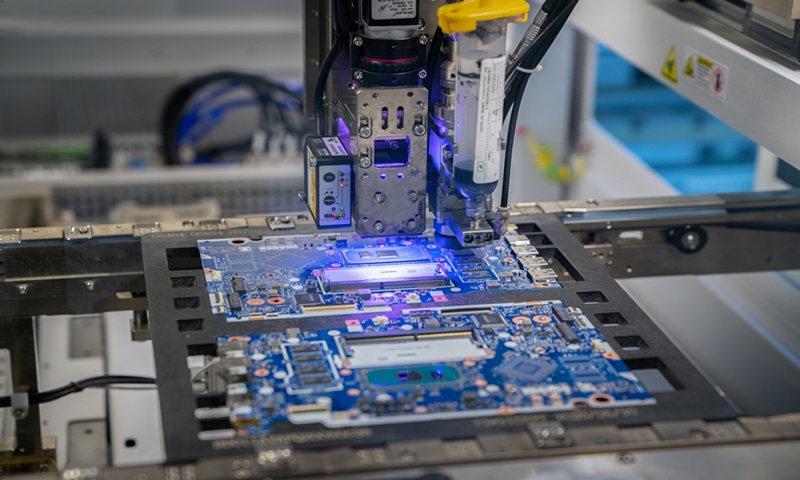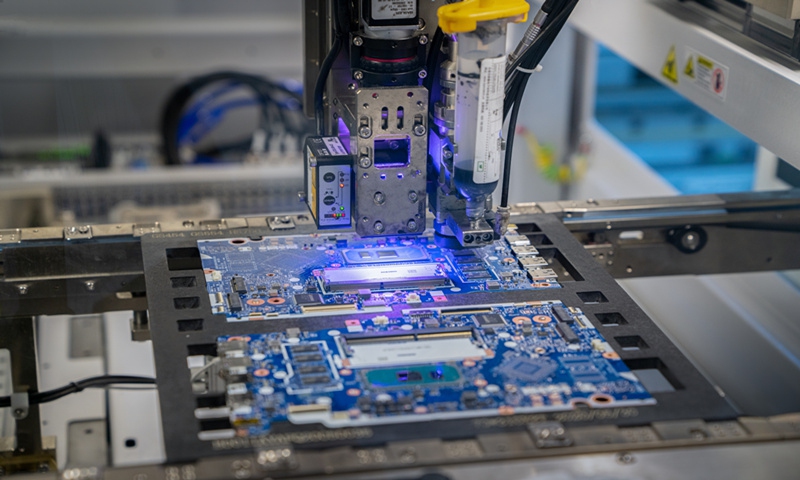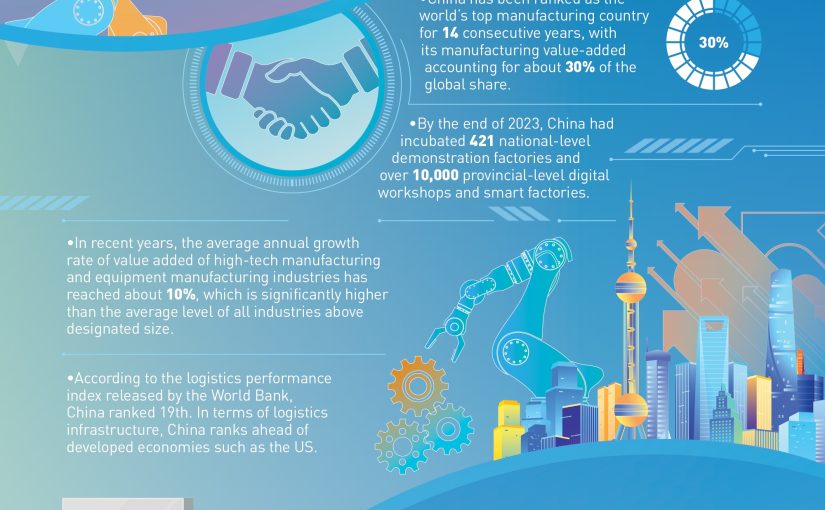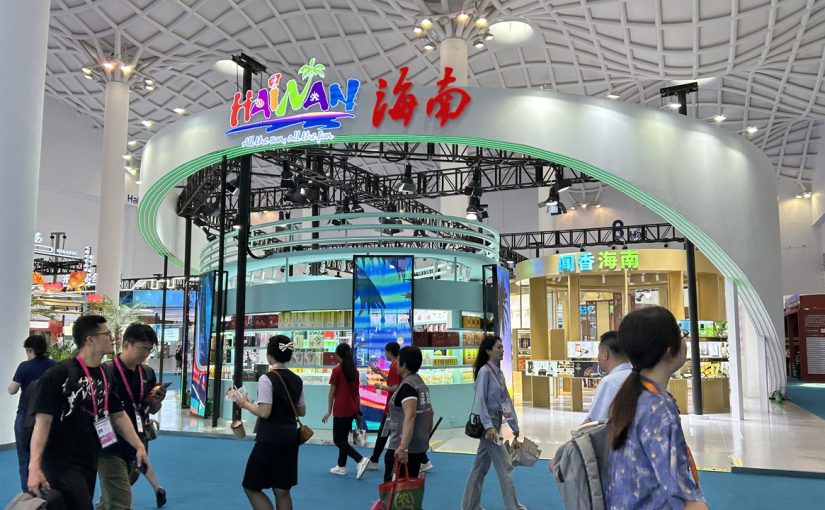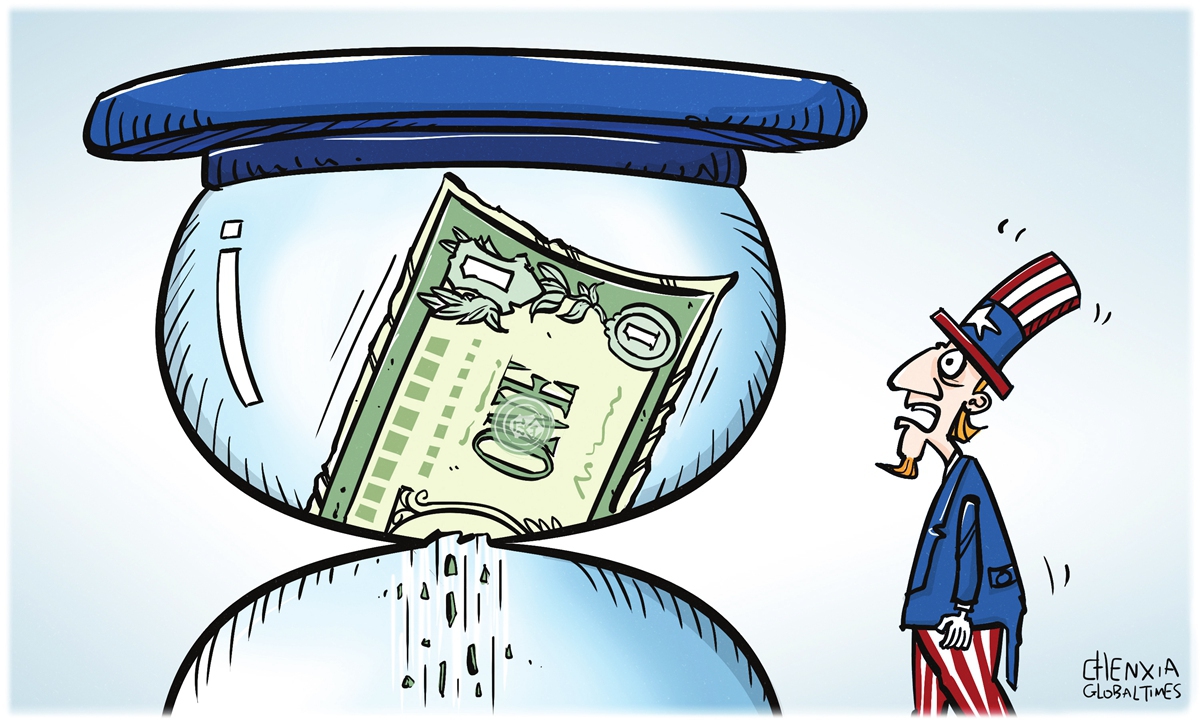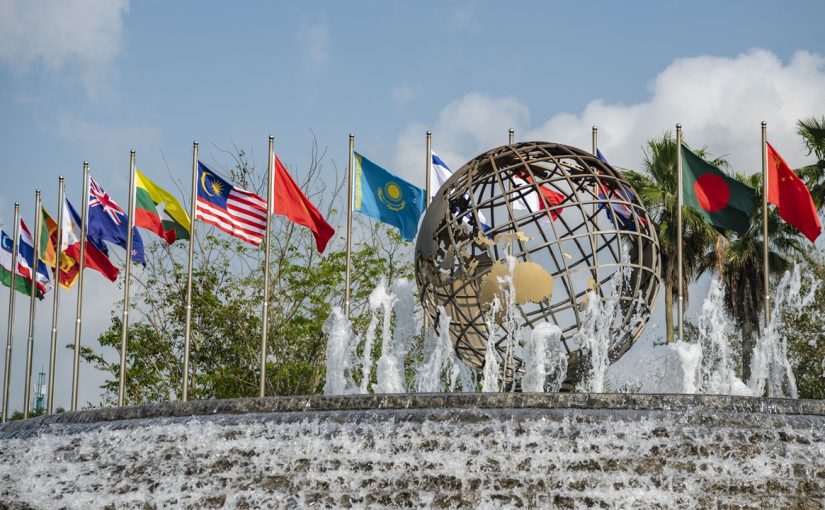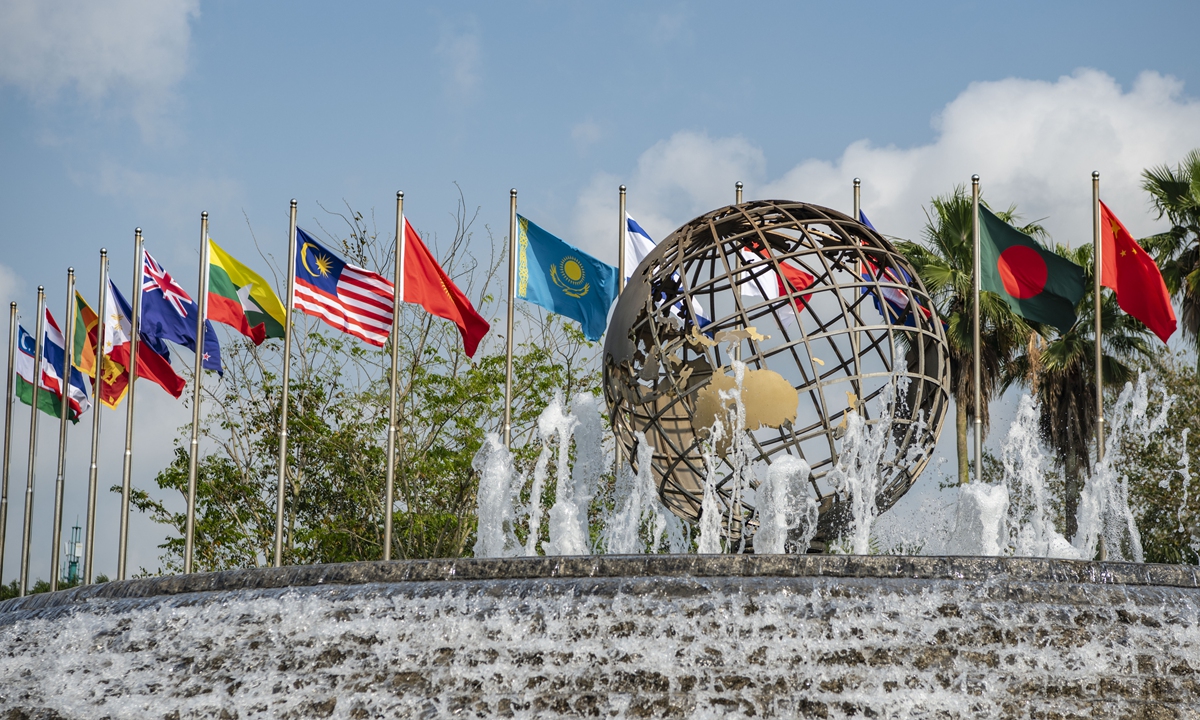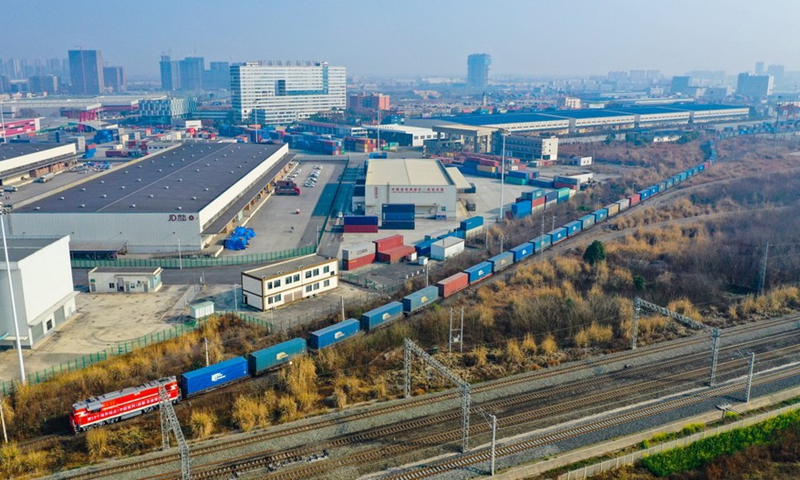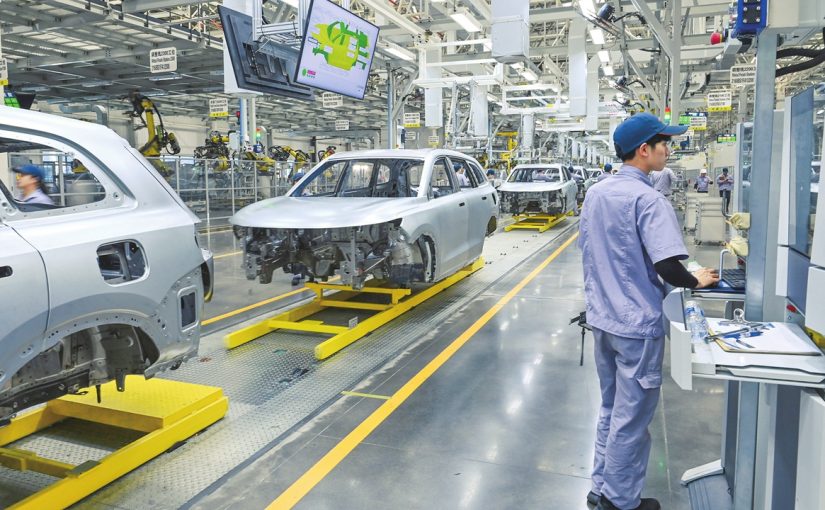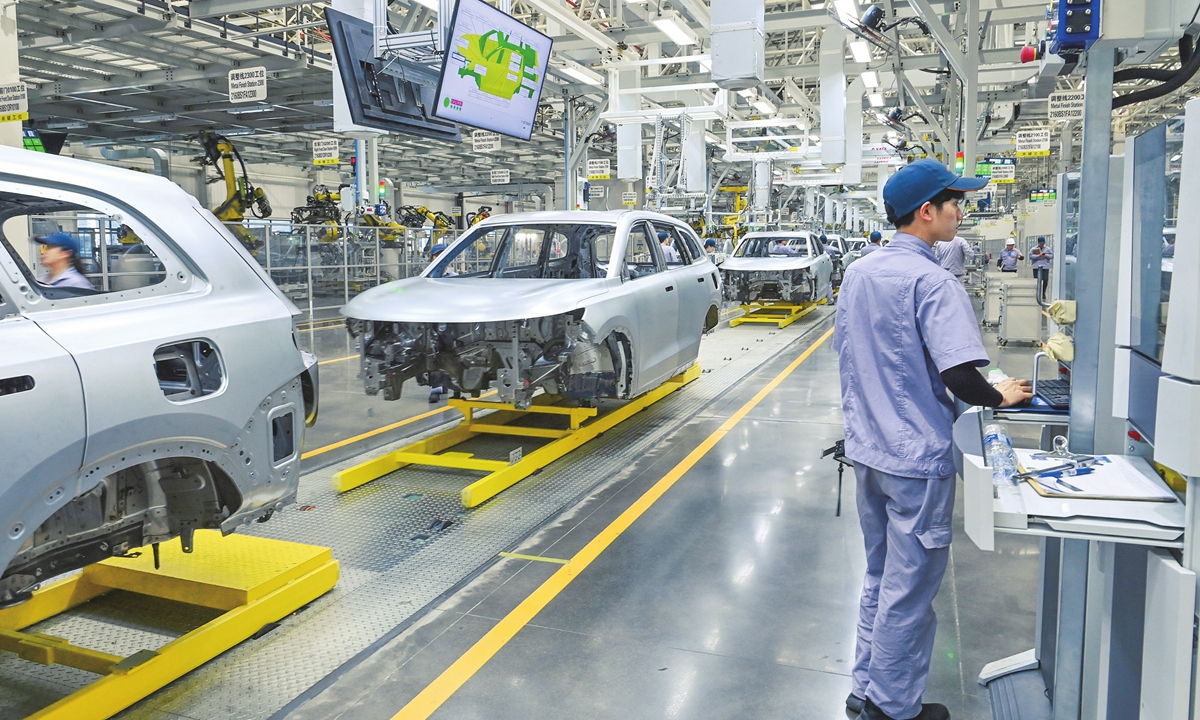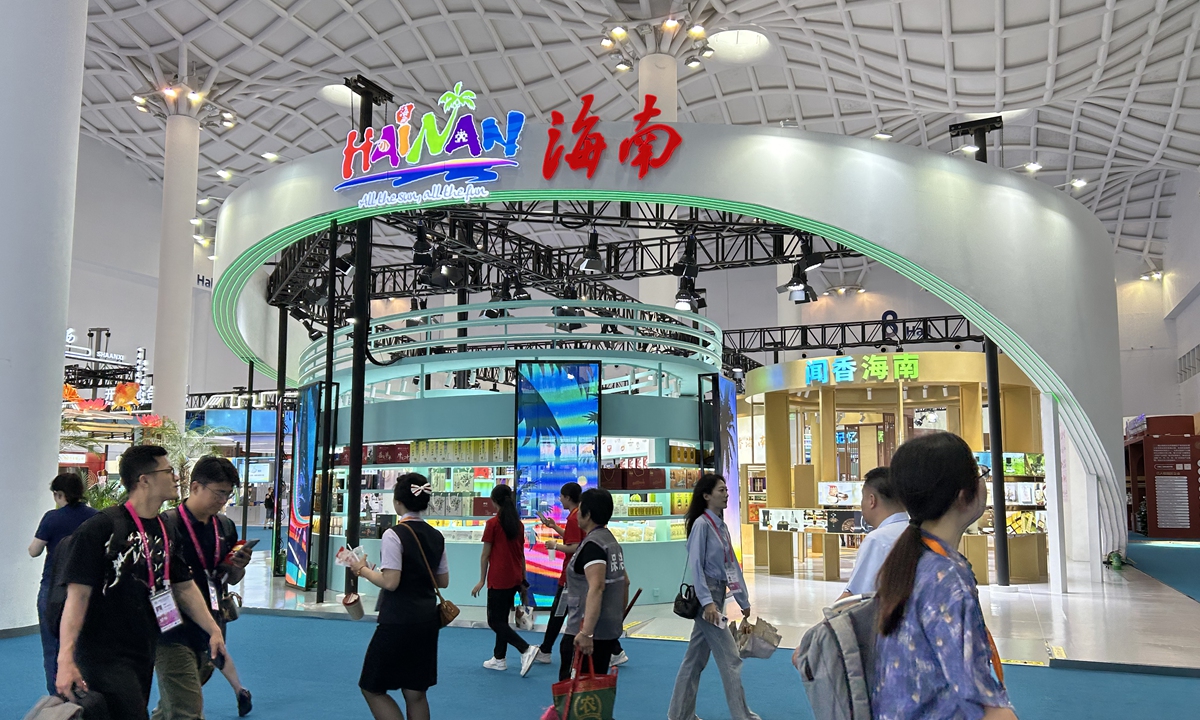
Visitors at the Hainan Pavilion at CICPE Photo: Qi Xijia/GT
Following intensive visits to China by foreign CEOs in March, China has entered a week of international trade exhibitions. This highlights the potential of China’s dynamic consumer market and the country’s unswerving commitment to opening-up.
Chinese officials have taken the opportunity to drive home the point that the door to China’s opening-up will only get wider, and representatives from leading multinationals told the Global Times that they are optimistic about the development of the Chinese consumer market, which is set to drive their revenue growth and instill new positivity into the global economy.
The 4th China International Consumer Products Expo (CICPE), Asia’s largest premium consumer products expo, began on Saturday in South China’s Hainan Province.
The six-day event, which lasts through April 18, will host more than 4,000 brands from 71 countries and regions to showcase their products for global consumers. More than 55,000 purchasers and professional buyers are expected to attend the event, with more than 300 brands launching about 1,000 new products during the expo.
In tandem with the CICPE, the Spring session of the China Import and Export Fair, or Canton Fair, will be held from Monday to May 5 in Guangzhou, South China’s Guangdong Province. A total of 137,000 buyers from 215 countries and regions have completed pre-registration for the mega trade show, according to China’s Ministry of Commerce.
The week of trade expos comes as the Chinese economy began the year on a solid footing, with some major international financial institutions raising their Chinese GDP projections for 2024. The resilience of the world’s second-largest economy and the attractiveness of its vast consumer market and manufacturing products offer a strong rebuttal to some Western media outlets’ hype about the Chinese economy reaching its peak, analysts said.
The international trade exhibitions allow the world to further identify and trust the China market and its economic prosperity, and also demonstrate the status of China’s economy, which plays a spearhead role in the world economy amid a complex global political environment, Cao Heping, an economist at Peking University, told the Global Times on Sunday.
Cao said that the observations and impressions of the investors who participate in the two trade shows will be conveyed abroad and boost confidence in the global market.
These overseas investors gain valuable firsthand information on China’s investment potential from these interactions, and they will be noticing the advantages of the China market in the unstable global political and economic environment, Cao noted.
Goldman Sachs and Citi recently released separate reports stating that China’s economy had gotten off to a good start in 2024. It is expected that the GDP growth target of “about 5 percent” set by the Chinese government can be achieved, and the forecast for China’s GDP growth rate for the full year has been raised, according to the Xinhua News Agency.
“The current wave of a backlash against economic globalization may be challenging, but the world will never return to a state of isolation. China will always be an important opportunity for global development. The door to China’s opening-up will only get wider,” said Peng Qinghua, vice chairman of the Standing Committee of the National People’s Congress, said in welcoming remarks for the CICPE on Saturday.
“The Chinese economy is resilient, dynamic and full of potential, and its strong long-term outlook remains unchanged,” Sheng Qiuping, Chinese vice minister of commerce, said in remarks on Saturday.
To many exhibitors, the CICPE, the first major international exhibition held in China so far this year, offers opportunities for global companies to explore the massive market in China.
“Expos such as the CICPE are wonderful opportunities to promote Ireland and what it has to offer, and they are excellent platforms for Irish companies to introduce themselves to Chinese consumers. Quite a few Irish companies return again and again to these expos,” Ambassador of Ireland to China Ann Derwin told the Global Times in an exclusive interview.
Ireland, the country of honor for the CICPE with a dedicated exhibition venue, aims to show its scientific and technological innovation, education, investment, tourism and culture.
With a population of 1.4 billion and a 400 million strong middle class, China has a per capita GDP exceeding $12,000, making it one of the most promising consumer markets in the world, analysts said.
Representatives of leading multinationals told the Global Times that they are optimistic about the development of the Chinese consumer market, which is set to drive their revenue growth and instill new positivity into the global economy.
Volkswagen Group China (VGC) demonstrated its commitment to Chinese customers with a spectacular lineup of 13 models at the CICPE.
“Building on our existing successful partnership with Hainan Province, and riding on the tremendous opportunities presented by the Hainan Free Trade Port, Volkswagen Group China is committed to contributing to the e-mobility and green development of Hainan,” Zhang Lan, VGC vice president of sales and marketing, told the Global Times on Saturday.
Since the beginning of 2024, China has accelerated its pace of opening-up, with the announcement of the 24-point measures to stabilize foreign investment and a range of visa exemption policies to facilitate business travel.
Efforts are also being strengthened to boost consumption by promoting equipment upgrades and consumer goods trade-ins, bringing new opportunities for foreign companies.
Jack Chan, EY China chairman, told the Global Times on Saturday that China is an important engine for global economic growth for all sorts of businesses, and China’s continued efforts to open up will provide more “motivation” for investors to tap into this massive market.
“We believe that the foreign investment performance in China this year will maintain a high-quality development trend,” Chan said. “We look forward to enhanced foreign investment in high-tech industries, the digital economy and sustainable development.”
Retail sales in the first two months of 2024 hit 8.13 trillion yuan ($1.14 trillion), increasing 5.5 percent year-on-year, according to the National Bureau of Statistics.
China is due to report its first-quarter growth data this week.
